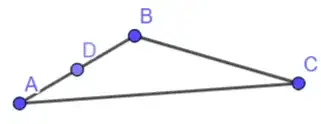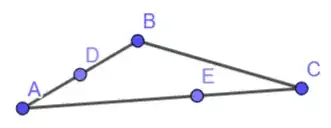The question assume Euclidean geometry, What we call $d_2$.
In Euclidean geometry, the distance between two points is given by:
$$\sqrt{(x_a-x_b)^2+(y_a-y_b)^2}$$
But this formula can be generalized for more distances:
$$d_p=\sqrt[p]{\vert x_a-x_b\vert^p+\vert y_a-y_b \vert^p}$$
Then we have two special cases:
$$d_1=\vert x_a-x_b\vert+\vert y_a-y_b \vert$$
Which is the Manhattan distance.
$$d_\infty=\sqrt[\infty]{\vert x_a-x_b\vert^\infty+\vert y_a-y_b \vert^\infty}=\max(\vert x_a-x_b\vert,\vert y_a-y_b\vert)$$
Which is the max distance.
Manhattan distance will give you a circle balancing on one apparent vertex.
Max distance will give you a circle lying on one of it's four apparent sides.
$p$ can take any real value in $[1,\infty)$ and the shape would still be a circle, though visually, it would morph between two "squares".
The reality is that you've to define "side" properly. It's where you've to abandon the visuals as they are utterly misleading.
And intuition is also really good a misleading.
This is a cautionary tale that even the simplest thing is just a nightmare to work with.
Also, I didn't mention the range $]0,1)$ because we obtain strange figures.
The formula for a circle with its center at the origin and of radius one is given by:
$$\sqrt[p]{\vert x\vert^p+\vert y\vert^p}=1$$
You can toy with the circle here: https://www.geogebra.org/calculator/hdguujtr
If you find that "weird", there is even a metric defined as:
$$\cases{1\text{ if both points are different}\\0\text{ if both point are the same}}$$
It's a good exercise to try to think about how would a circle of radius one look like in that metric. (it's rewarding a mind bending)



